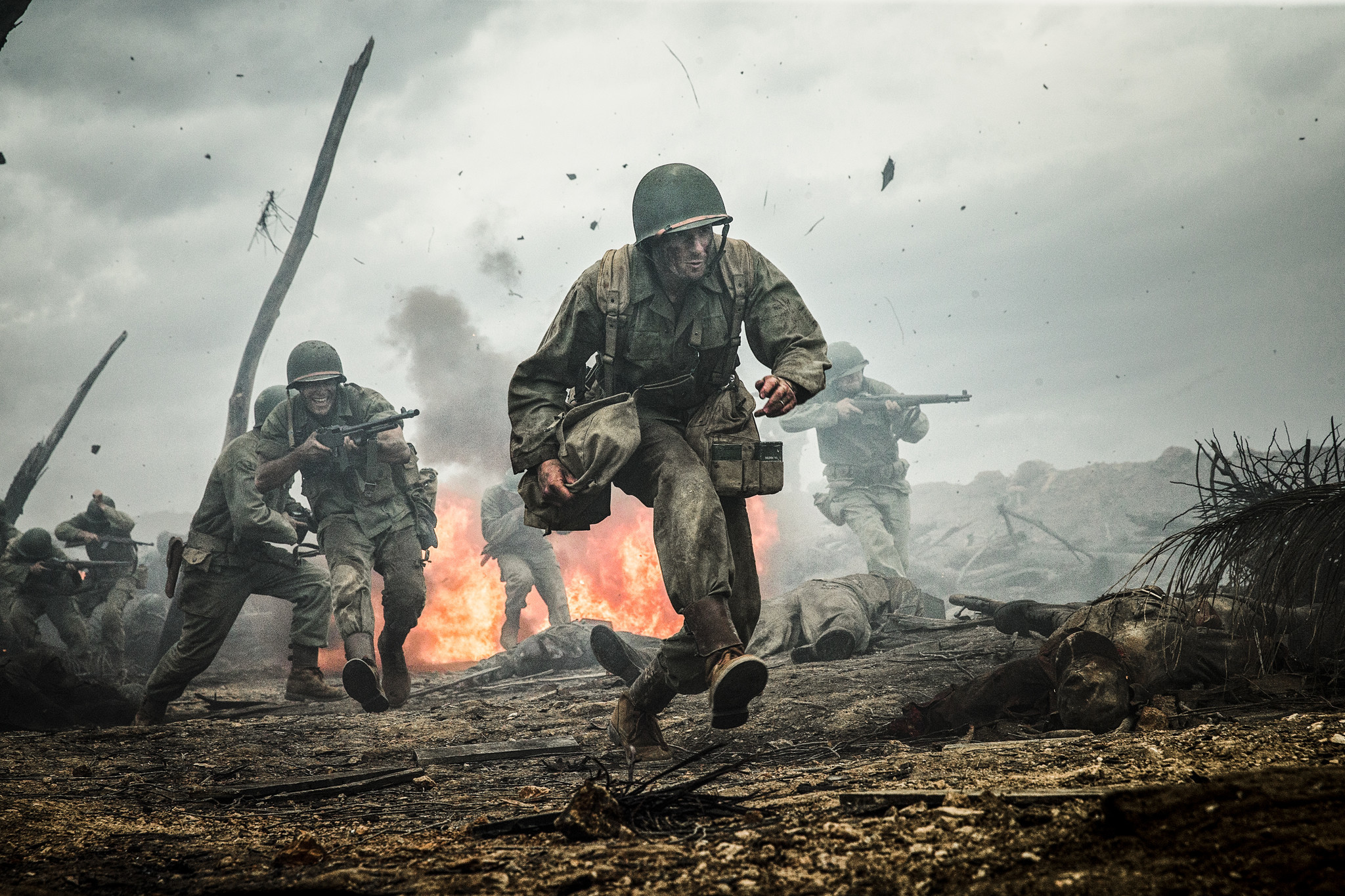If you missed Mel Gibson’s The Passion of the Christ or Apocalypto, you may not be aware of the director’s near masochistic penchant for realistic violence. Be warned, Hacksaw Ridge is not for the faint of heart. Each act of bodily harm, whether the result of a gun shot or an everyday accident, is captured with Gibson’s unflinching lens. The camera never shies away from framing the grizzliest details of each and every wound – blood gushes, bones snap and bodies burn and Gibson makes sure we witness each traumatic moment. His target subject here is the horrific experience of war and the transformative power of religious conviction – most significantly, the 6th Commandment, “thou shalt not kill.” However, for a film that seeks to champion the power of god’s peace in the face of man’s violence, Hacksaw Ridge spends far too much time relishing in the horrors of the battlefield. Gibson composes his wartime sequences with an artistic, nightmarish expertise and while he doesn’t necessarily set out to glorify said violence, it becomes the centrepiece of this fascinating but flawed picture, ultimately dulling its central message.
Conscientious objector Desmond T. Doss (Andrew Garfield) enlists for World War II intent on never touching a weapon. As a deeply religious Seventh-Day Adventist, Doss believes he can go to war as a medic without ever firing a gun. After facing ridicule, threatened discharge and a possible court-martial, Doss heads to Okinawa with his religious principles intact. In its earlier, pre-war segments, Hacksaw Ridge is rife with good-natured, mawkish Americana. As a young man, Desmond Doss is the most mild-mannered and downright neighbourly Virginian one could possibly endure. He’s likeable to a point, but without any real conflict in his motivation, there’s little or nothing to connect with. His conviction is admirable, certainly, but it does little to endear Doss to the average viewer. Hacksaw Ridge also stars Hugo Weaving as Doss’s alcoholic father and Vince Vaughn as the sergeant of his platoon. It’s hard to put our faith in Vaughn’s dramatic acting chops after the travesty that was season two of True Detective. He does a far more admirable job here, channelling R. Lee Ermey to reasonably humorous effect in the earlier boot camp segments and bringing a natural determination to the film’s hellish battle sequences. Hacksaw Ridge gives us a valid reason to anticipate further dramatic turns from the actor.
Apart from a brief, obscured glimpse at the beginning of the film, our first real look at battle commences with the nightmarish navy bombardment of Hacksaw Ridge. Immediately following this, the platoon is ordered to climb a lofty net-ladder up the side of the towering ridge. This first climb produces a kind of sinister tension unlike anything we’ve seen before. Sure, it recalls the ghastly beach landing from Saving Private Ryan, but here, where the only way one can see is up, the lingering unknown is far more dreadful. When the fog recedes for the second attack, the scope of the battlefield is genuinely breathtaking. The initial assault on the ridge is framed with disconcerting close ups, shrouded in fog. Here, Gibson pulls back to reveal a hellish vista of warfare – at first it appeared there was no way into battle, now it become’s clear that there’s no way out. With Hacksaw Ridge, Gibson produces some of the finest and most disturbing battle sequences ever committed to film.
However, once the battle commences – and it doesn’t relent – the central message of Hacksaw Ridge is swiftly obliterated, like so many massacred soldiers. It becomes clear alarmingly quickly, that the only way to survive here is by indiscriminately killing anything that moves. It’s hard to ignore the notion that Doss would be a much more effective medic with a gun in his hand. Indeed, at times, he’s only able to do his job because someone else if firing for him: Doss gets by on admirable determination, religious conviction, and sheer luck. For all its violent realism, then, Hacksaw Ridge retains a sense of fantasy, at times it's difficult to believe what we’re watching. Still, everything we see is true, a fact hammered home when several interviews with those that were there follow the film. Gibson tugs the heartstrings, twists the nerve endings and thumps the good book relentlessly throughout his film, but it’s only here, when unmistakable reality sets in, that Hacksaw Ridge achieves a kind of emotional catharsis. Unfortunately, despite Gibson’s masterful record of battle, some fine acting and a well-crafted, consistent sense of dread rarely felt in war cinema, Hacksaw Ridge muddles its message too much to really engage or affect. Gibson delivers an oxymoron: an anti-war movie that relishes in the horror of its subject.













